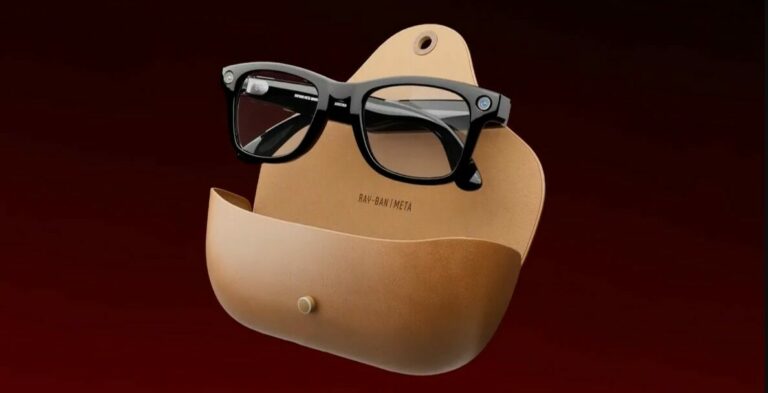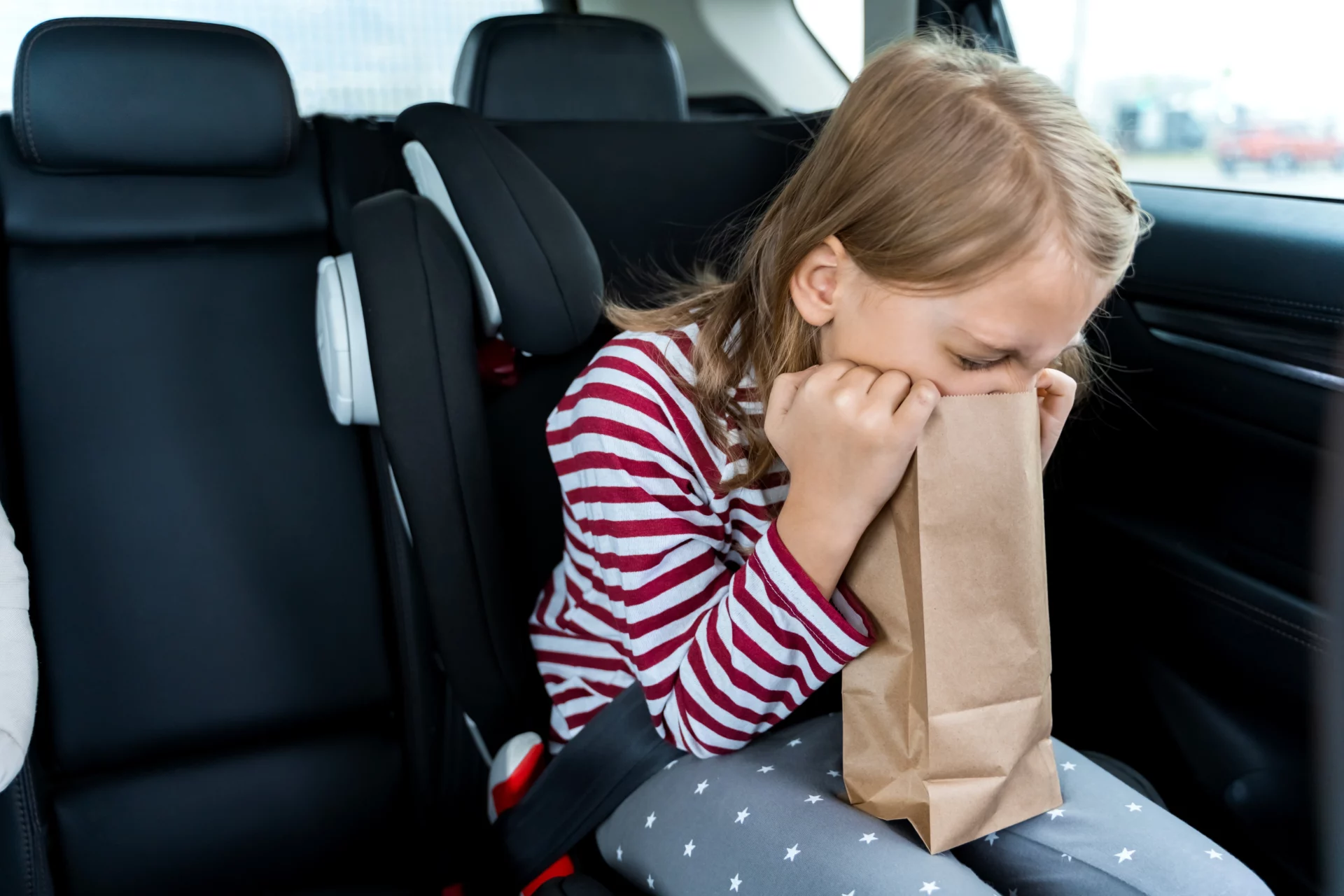
- Health
How to avoid motion sickness while traveling
Don’t let “motions sickness”, which mainly affects children and women, interfere with family trips
By Natália Faria G. Viana
Family vacations promise delightful moments, but for those prone to motion sickness during travel, fun away from home can quickly turn into discomfort. If you or any family member usually faces this uncomfortable condition, don’t worry. Here are various clarifications on the subject and a valuable compilation of tips on how to avoid motion sickness while traveling to make trips free of nausea and therefore more pleasant for everyone.
What is motion sickness called?
Some people think that travel sickness is labyrinthitis, since the labyrinth is the inner ear region connected to balance and body position perception. In fact, there are different labyrinth disorders, and the term labyrinthitis is usually erroneously used generically. Travel sickness most commonly results from a labyrinth condition called kinetosis, also known as “motion sickness.”
Which doctor treats motion sickness?
The specialist in kinetosis is the otolaryngologist, who treats motion sickness as well as other conditions related to the ear, nose, and throat, plus structures related to them, such as the head and neck.
What causes travel sickness?
Medicine hasn’t yet reached a definitive consensus on why we feel sick when traveling by bus, car, plane, and ship, but there are some theories. The most accepted is called the “sensory conflict theory,” which is based on the body’s balance system.
Balance isn’t controlled by a single organ but rather by collaboration between our vision, tactile sensations, and organs in the inner ear, such as the labyrinth. These elements form a system that determines the body’s position in space, like our internal GPS.
When the information our eyes see doesn’t match other balance sensations collected by the body – such as when we’re sitting inside a moving vehicle – the information conflict is processed by the brain, which tries to compare the current movement pattern with movements contained in memory.
If there’s no compatibility, meaning no memory of this movement pattern, a sensation of imbalance and instability arises, generating discomfort. Thus, the brain may activate the vomiting center as a defense against the situation perceived as potentially threatening.
Why do some people get motion sick and others don’t?
Despite still not knowing exactly the neurophysiological causes of kinetosis, meaning why the tendency for travel sickness varies from person to person, studies suggest some hypotheses. It might occur due to labyrinth immaturity, which may or may not stabilize with advancing age, the influence of hormonal factors, such as menstruation and pregnancy, as well as the habituation process. This means children, women, and people unaccustomed to traveling may suffer more frequently from motion sickness.
Children’s motion sickness
It’s not difficult to notice that more children get motion sick than adults. Many scientific studies have been conducted on this and found that kinetosis is not only more frequent in children but also varies according to age group. It has been shown to be more common from six or seven years of age, with the disorder’s peak occurring around ten years old. Various studies have also concluded that kinetosis prevalence is statistically more significant among girls than boys.
Although it’s a frequent problem, children’s travel sickness often goes unnoticed, probably due to difficulty diagnosing inner ear balance problems, known as the labyrinth or vestibular system. Symptoms are subjective and variable, complicating it for little ones to express discomfort. Adequate support and treatment, however, are essential to overcome the impacts that travel sickness can have on children’s development and well-being.
What affects travel sickness intensity?
Various factors influence kinetosis symptom intensity, many related to environment: exposure time and vehicle movement amplitude are determining factors for body reaction. While spending hours on a ship in a storm can cause intense sickness, a one-hour car trip on a road with almost no curves tends to cause less discomfort. Additionally, drivers tend to experience milder symptoms compared to passengers because being in control, they can anticipate vehicle movements and instinctively adjust their posture to better align with the swaying.
What’s the best medicine for travel sickness?
There are various neurotransmitters that participate in vertigo and nausea mechanisms, allowing a wide variety of medications to be used to treat kinetosis, such as antiemetics. However, there’s no evidence of superiority among drugs for controlling these symptoms. What varies are the action mechanisms, drug interactions, and side effects of each one. This makes choosing the best travel sickness medicine always a medical decision through individual patient evaluation.
Taking motion sickness medicine before travel
Some doctors recommend starting kinetosis medication a certain time before travel as a preventive measure, varying from a few hours to even a few days. This occurs because certain medications used to treat kinetosis need time to reach effective levels in the body and prevent symptoms before they occur.
Additionally, this strategy may also relate to the fact that many medications used to treat kinetosis have the potential to cause drowsiness and a certain “hangover” as side effects. By starting medication in advance, the body has a chance to gradually adjust to medication effects, reducing the probability of feeling very sluggish and prostrated during travel.
However, it’s important to follow medical instructions and specific guidelines for each medication, as efficacy and effects may vary. Always consult a healthcare professional before starting any kinetosis medication, especially if you’re considering prevention before travel.
Alternative motion sickness remedies
There are also, besides allopathic options, homeopathic medications and alternative medicine treatments, such as acupuncture, aromatherapy, and even home remedies to avoid travel sickness. Choosing between different options may depend on personal preferences, health history, and individual experiences. Sometimes, finding the right option involves trying different approaches and evaluating how each body responds. And it’s not always necessary to choose a single approach. Some people combine different methods to improve motion sickness. However, it’s always a good idea to consult a doctor or healthcare professional before trying new approaches, especially if you have health concerns or are pregnant or breastfeeding.
What to do to relieve motion sickness during travel?
When you’re in the middle of a trip and facing a kinetosis crisis, all you want to know is what to do to quickly relieve sickness. There are several measures indicated to try to relieve travel sickness, although each one’s efficacy varies from person to person. The best known are:
- Acupressure for sickness: Acupressure is a technique similar to acupuncture, but without needles. At the first sign of nausea, stimulate acupressure point PC6 (Pericardium 6), located on the inner part of either wrist, three fingers above the wrist fold, between tendons. Press gently for at least 1 to 2 minutes, until feeling better. Circular movements or static pressure are effective, depending on personal preference.

- Aromatherapy for sickness: Certain essential oils can help in kinetosis crises. For example, menthol present in peppermint essential oil has relaxing effects on gastrointestinal tract muscles when inhaled. Ginger essential oil is known for its antiemetic properties, meaning it can help prevent or relieve nausea. Some essential oils, however, may be unsafe for pregnant women, nursing mothers, people with certain medical conditions, or in combination with certain medications. Consult a healthcare professional before use, especially in children.
- Candy or gum for sickness: Candies or gum can help keep the mouth moist, which tends to reduce nausea sensation. Even better if the chosen flavor is peppermint or ginger, given that these ingredients’ aroma tends to calm the digestive system. Always prefer sugar-free options, as sugar can cause blood glucose level fluctuations, which may worsen sickness sensation.
- What to drink for sickness: Ingesting a little water in small sips can help calm the stomach. Adding some squeezed lemon or fresh grated ginger to water, or opting for cold sparkling water, can be even more effective for relieving nausea. Herbal teas like ginger, peppermint, rosemary, or chamomile may also have calming properties for the digestive system. However, some of these ingredients may contain compounds that may not be safe during pregnancy, breastfeeding, or for small and more sensitive children. Consult a doctor before introducing them.
- Breathing techniques for sickness: Certain breathing techniques can relieve kinetosis symptoms, relaxing the nervous system and reducing anxiety. Try deep abdominal breathing, expanding the abdomen while inhaling and exhaling slowly. Another technique is 4-7-8 breathing, where you inhale through the nose for 4 seconds, hold for 7, and exhale through the mouth for 8.
- Getting fresh air: Feeling wind on your face, opening a vehicle window or directing air conditioning output toward yourself, can provide additional stimulus to the vestibular system, which is involved in movement and balance detection. This can help better synchronize sensory information, reducing conflict and associated nausea.
- Moving the body: When possible, walking a little inside the vehicle or making a stop along the route to move your legs stimulates the vestibular system, helping realign sensory information and reduce the sensation of conflict between visual movement and internal balance.
- Tilting the head to one side: During a kinetosis crisis, laying your head to one side can help reduce pressure variation in the ears and, consequently, relieve symptoms. This occurs because pressure variation in the inner ear can affect balance and contribute to sickness sensation. By laying your head sideways, you can minimize these pressure variations and possibly reduce discomfort associated with kinetosis.
- Covering one ear: Using a finger or palm to gently cover just one ear can help reduce kinetosis symptoms, as this action decreases the amount of conflicting sensory information the brain is receiving. However, this technique may cause discomfort for some more sensitive people.
Remember that individual reactions vary and not all techniques may work for all family members. If symptoms are severe or persistent, seeking medical guidance is always advisable.
What to do to prevent travel sickness?
Generally, it’s more difficult to stop kinetosis symptoms after they’ve started than to take measures to prevent them from beginning. Once kinetosis symptoms are already present, the vestibular system and body’s sensory information are already misaligned, which can make immediately relieving symptoms more challenging.
Here are some techniques to prevent kinetosis before travel, which may be more effective than trying to stop symptoms after they’ve begun:
- Avoid exposure to strong odors that may cause discomfort, asking other family members not to wear perfume or bring foods with intense smells inside the vehicle.
- Avoid alcoholic beverages, caffeine, sugar, and heavy, fatty meals before travel, but also don’t travel with a completely empty stomach.
- Maintain hydration, but avoid ingesting large amounts of liquids at once.
- Keep your gaze fixed on a distant, stable point on the horizon to synchronize visual and internal information.
- Ensure good air circulation in the environment and consider opening a window to feel wind on your face.
- Avoid reading, using electronic devices, or doing activities requiring close visual focus.
- Put on an acupressure bracelet, which stimulates wrist points related to nausea relief, 20 to 30 minutes before travel and keep it during the entire journey can prevent kinetosis symptoms for some people.
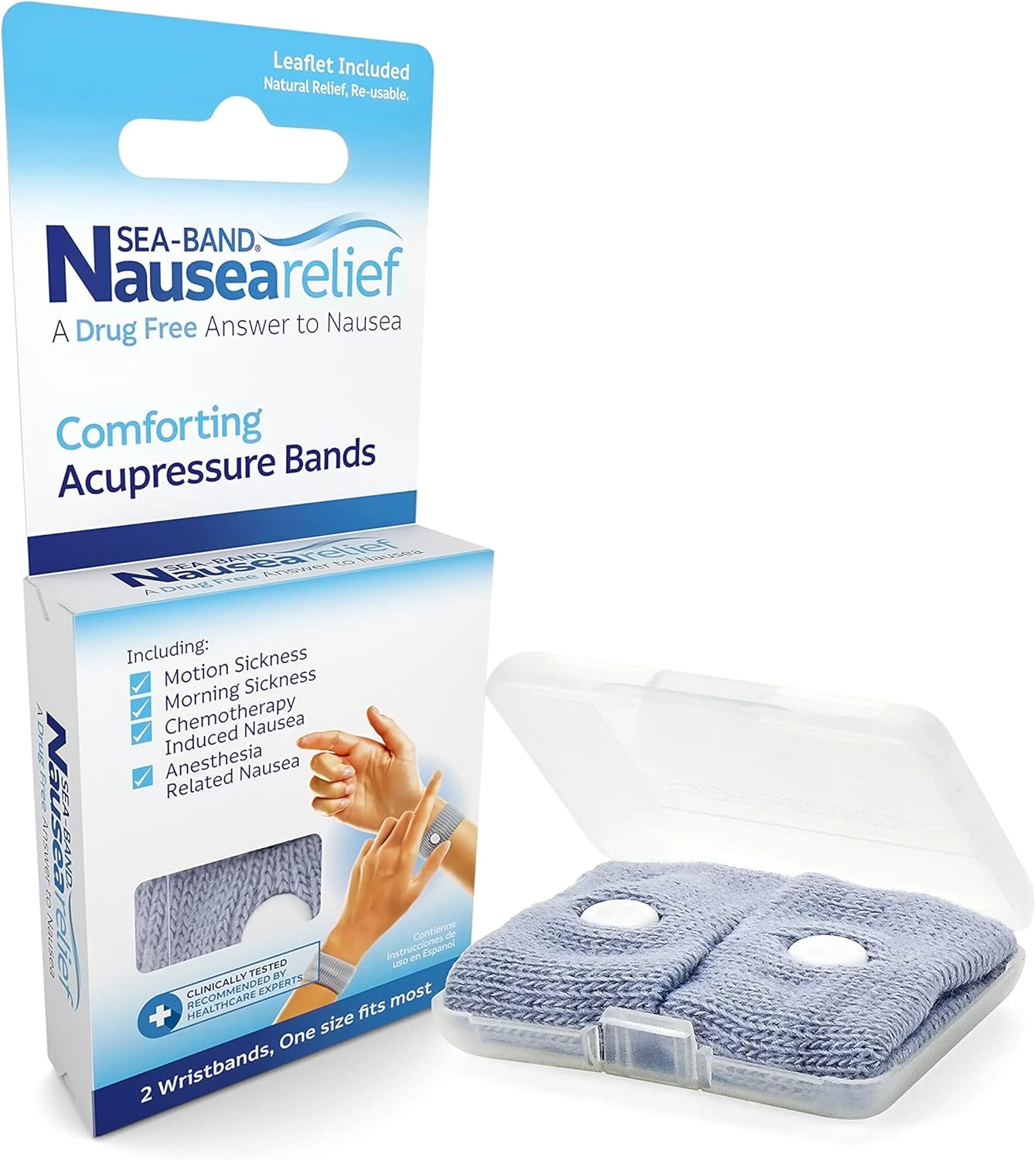
- 10 minutes before travel, attach an anti-motion sickness patch behind the ear, which lasts about 1 to 3 days.
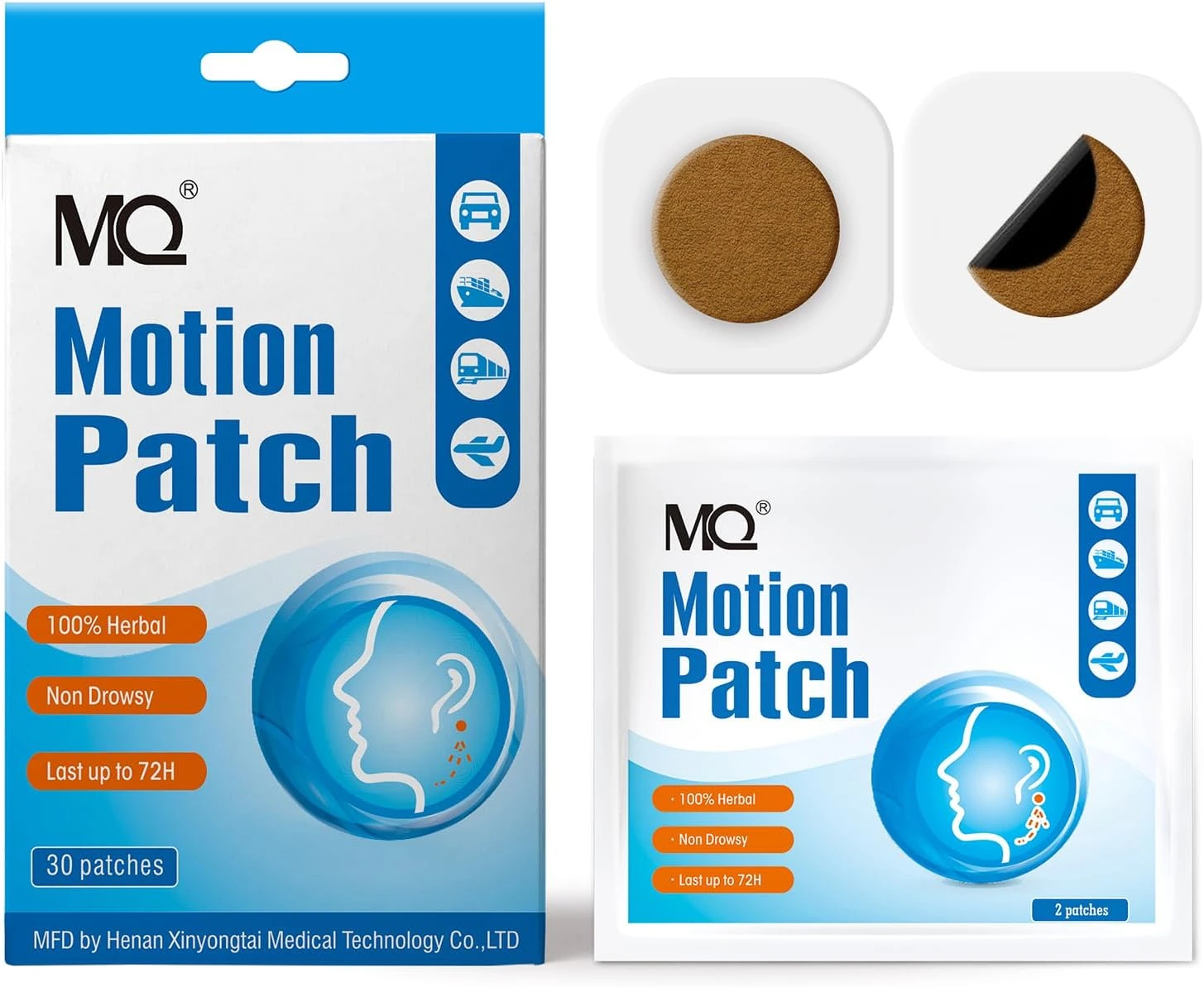
- For car trips, wear anti-motion sickness glasses during the entire journey. These devices don’t have magic lenses, but come with a liquid circle in the frame, whose level varies according to vehicle movement, creating an artificial field of vision in the user’s eyes and resynchronizing them through a balancing system.
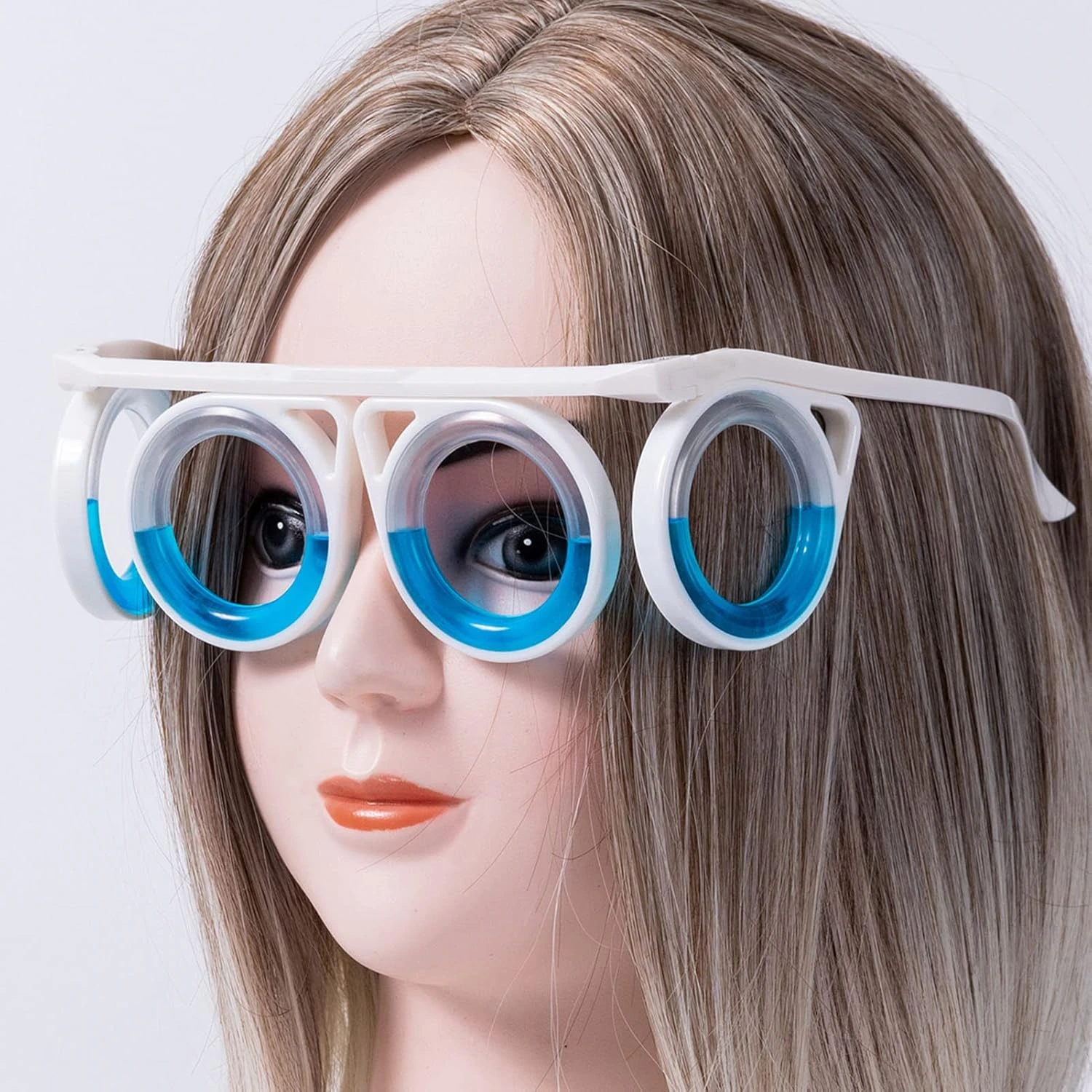
What’s the best position to avoid travel sickness?
The most recommended position to minimize kinetosis symptoms when traveling may vary from person to person, but generally, choosing a seat where you stay with a straight spine and have a clear view of the horizon can be helpful. Sitting facing forward and looking at the road ahead can help better synchronize visual information with the body’s internal sensations, reducing sensory conflict that causes kinetosis. Avoiding sitting with your back to the direction of movement or looking down can be beneficial for some individuals. Additionally, choosing a seat that has fewer vibrations and excessive movements, such as a seat in the front of the vehicle or near the wings on a plane, can also help minimize symptoms. However, the ideal position may vary according to individual preferences and responses, so it’s important to adjust and experiment with different positions to find what works best for you.
Does travel sickness have treatment?
For those seeking how to end travel sickness permanently, the ideal is to see an otolaryngologist. Despite kinetosis still not having a definitive cure, there are treatment options. Besides using medications prescribed by the doctor, which aim to relieve symptoms punctually, there are some labyrinthine rehabilitation therapies performed by the ENT specialist, which repeatedly expose patients to conflict situations, generating memory and progressive tolerance to different movement patterns.
The good news is that time can also be good medicine, since kinetosis isn’t always permanent. In children’s cases, maturation of the inner ear organ set, which occurs in adolescence, can improve symptoms or even make them disappear completely. And when kinetosis prevails in adulthood, curiously aging can bring relief. From age 50 there’s a reduction in labyrinthine function, which usually reduces symptoms.
Travel tips for those who get motion sick
In more severe kinetosis cases, if sickness is a concern, consider avoiding trips where there’s no escape from a crisis, such as ship journeys. Instead, choose transport options where it’s possible to stop or exit if needed. This provides a sense of control and tranquility.
Opting for itineraries with fewer vehicle displacements can be an effective strategy. So-called “slow travel,” where you focus on fewer destinations, allows a more tranquil pace and less stress for those prone to sickness. Fewer hours in the vehicle mean fewer chances of facing kinetosis crises.
For those who resort to kinetosis medicines, a conscious approach is essential. Since many of these medications cause drowsiness as a side effect, plan displacements for nighttime periods, minimizing circadian cycle disruption. Additionally, avoid scheduling intense activities right after disembarkations, allowing everyone time to readjust.
Remember that family support and understanding are fundamental. Maintain open communication so everyone can adjust to each member’s needs during travel, with patience and empathy.
With careful planning, conscious choices, medical follow-up, and natural techniques available, you can enjoy family adventures without being affected by motion sickness. Remember that each person is unique, so it’s worth experimenting with different approaches to find what works best for each one. Follow these tips and embark on your travels with more confidence and comfort.
Reference
https://www.scielo.br/j/fp/a/M8bL6kmHtW6QFxppCFqWS4n/#:~:text=Estudos%20apontam%20que%20a%20cinetose,Motion%20sickness%20susceptibility.
Things the Way Family love to pack in their suitcase:
Gate
Eletronics for the travel: smartphone, drone, câmera, charger,…
Destiny
UV clothes, bikinis, caps, diving goggles, snorkel mask and other accessories…
















